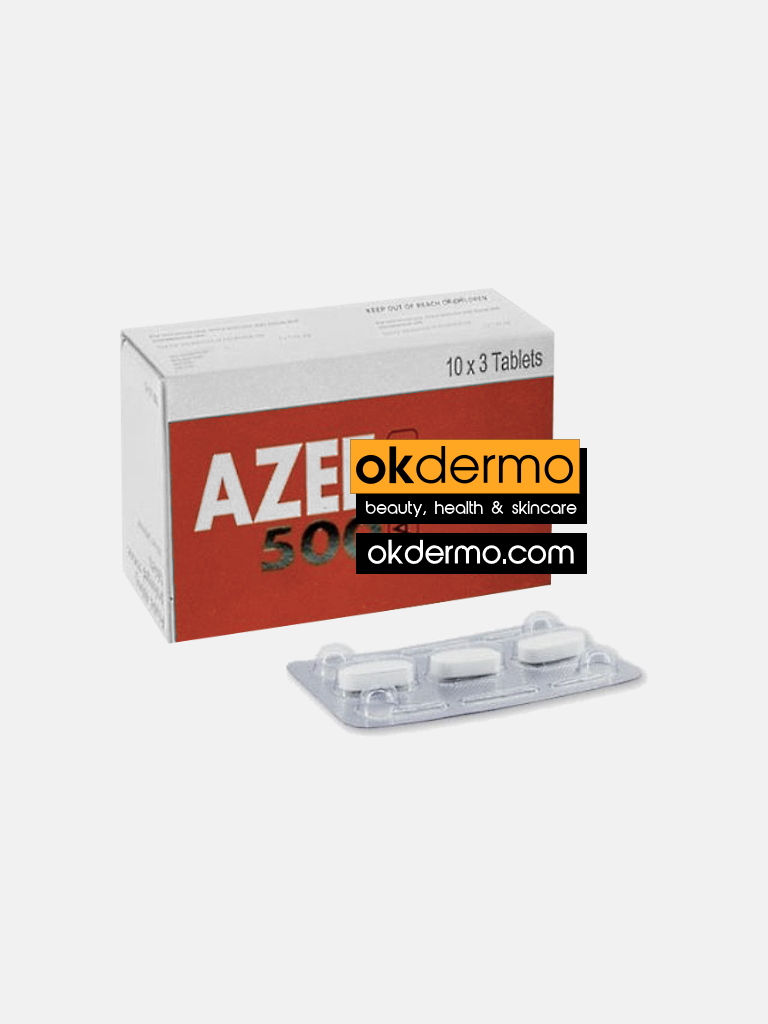Description
What is Azithromycin Dihydrate Azee® Tablets?
Azee 250mg/500mg are an antibiotic used to treat various types of bacterial infections of the respiratory tract, ear, nose, throat, lungs, skin, and eye in adults and children. It is also effective in typhoid fever and some sexually transmitted diseases like gonorrhea. Azee Tablet is a broad-spectrum type of antibiotic effective in killing many types of gram-positive bacteria, some types of gram-negative bacteria and other microorganisms. This medicine is taken orally, preferably either one hour before or 2 hours after a meal. It should be used regularly at evenly spaced time intervals as prescribed by your doctor. Do not skip any doses and finish the full course of treatment even if you feel better. Stopping the medicine too early may lead to the return or worsening of the infection.
Commonly seen side effects seen with this medicine include vomiting, nausea, stomach pain, and diarrhea. These are usually temporary and subside with the completion of treatment. Consult your doctor if you find these side effects worry you or persist for a longer duration. Inform your doctor if you have any previous history of allergy or heart problems before taking this medicine. Pregnant or breastfeeding women should consult their doctor before using this medicine.
Azithromycin is an antibiotic used for the treatment of a number of bacterial infections. This includes middle ear infections, strep throat, pneumonia, traveler’s diarrhea, and certain other intestinal infections. It can also be used for a number of sexually transmitted infections, including chlamydia and gonorrhea infections. Along with other medications, it may also be used for malaria. It can be taken by mouth or intravenously with doses once per day.
Common side effects include nausea, vomiting, diarrhea and upset stomach. An allergic reaction, such as anaphylaxis, QT prolongation, or a type of diarrhea caused by Clostridium difficile is possible. No harm has been found with its use during pregnancy. Its safety during breastfeeding is not confirmed, but it is likely safe. Azithromycin is an azalide, a type of macrolide antibiotic. It works by decreasing the production of protein, thereby stopping bacterial growth.
Azithromycin was discovered in 1980 by Pliva and approved for medical use in 1988. It is on the World Health Organization’s List of Essential Medicines. The World Health Organization classifies it as critically important for human medicine. It is available as a generic medication and is sold under many trade names worldwide. In 2017, it was the 57th most commonly prescribed medication in the United States.
Azithromycin is used to treat diverse infections, including:
- Prevention and treatment of acute bacterial exacerbations of chronic obstructive pulmonary disease due to H. influenzae, M. catarrhalis, or S. pneumoniae. The benefits of long-term prophylaxis must be weighed on a patient-by-patient basis against the risk of cardiovascular and other adverse effects.
- Community-acquired pneumonia due to C. pneumoniae, H. influenzae, M. pneumoniae, or S. pneumoniae
- Uncomplicated skin infections due to S. aureus, S. pyogenes, or S. agalactiae
- Urethritis and cervicitis due to C. trachomatis or N. gonorrhoeae. In combination with ceftriaxone, azithromycin is part of the United States Centers for Disease Control-recommended regimen for the treatment of gonorrhea. Azithromycin is active as monotherapy in most cases, but the combination with ceftriaxone is recommended based on the relatively low barrier to resistance development in gonococci and due to frequent co-infection with C. trachomatis and N. gonorrhoeae.
- Trachoma due to C. trachomatis
- Genital ulcer disease (chancroid) in men due to H. ducrey
- Acute bacterial sinusitis due to H. influenzae, M. catarrhalis, or S. pneumoniae. Other agents, such as amoxicillin/clavulanate are generally preferred, however.
- Acute otitis media caused by H. influenzae, M. catarrhalis or S. pneumoniae. Azithromycin is not, however, a first-line agent for this condition. Amoxicillin or another beta lactam antibiotic is generally preferred.
- Pharyngitis or tonsillitis caused by S. pyogenes as an alternative to first-line therapy in individuals who cannot use first-line therapy
Bacterial susceptibility: azithromycin has relatively broad but shallow antibacterial activity. It inhibits some Gram-positive bacteria, some Gram-negative bacteria, and many atypical bacteria. A strain of gonorrhea reported to be highly resistant to azithromycin was found in the population in 2015. Neisseria gonorrhoeae is normally susceptible to azithromycin, but the drug is not widely used as monotherapy due to a low barrier to resistance development. Extensive use of azithromycin has resulted in growing Streptococcus pneumoniae resistance.





























